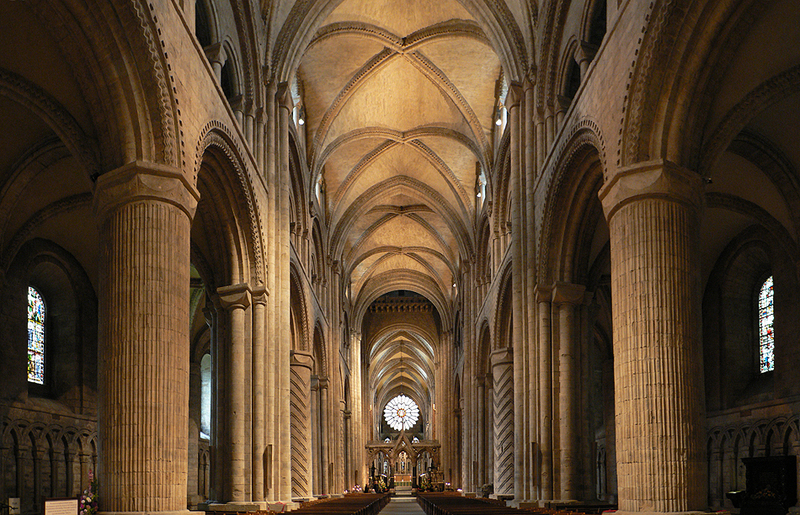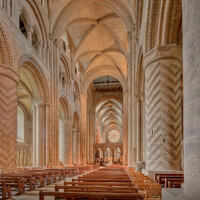Durham Cathedral
Type:
Churches,
Monasteries
Date:
1093 (building begun),
1104 (translation of St. Cuthbert to new shrine)
Location or Findspot (Modern-Day Country):
England
Description:
Durham Cathedral (which is also a monastery) became the final resting place of St. Cuthbert after the monks of Lindisfarne had moved his body several times. Begun in 1093, a few decades after the Norman conquest of England and inspired by Norman buildings in France (such as Saint-Étienne at Caen), the cathedral's vaulted nave employed pointed ribs springing from compound piers. The nave is three storeys tall (arcade, gallery, clerestory). These innovations—pointed rib vaults and a tripartite elevation—was widely copied in England thereafter. Durham's piers alternate with massive columns incised with geometric patterns, of which the most complex mark altar spaces and Cuthbert's shrine. The miracle-working saint was translated to the east end of the cathedral in 1104. His fragmentary seventh-century carved oak coffin and its contents are still preserved.
Relevant Textbook Chapter(s):
7
Repository and Online Resources:
• See more images of Durham on the Kornbluth Photography website.
Image Credits:
Wikimedia Commons; Flickr; Navid Jamali





